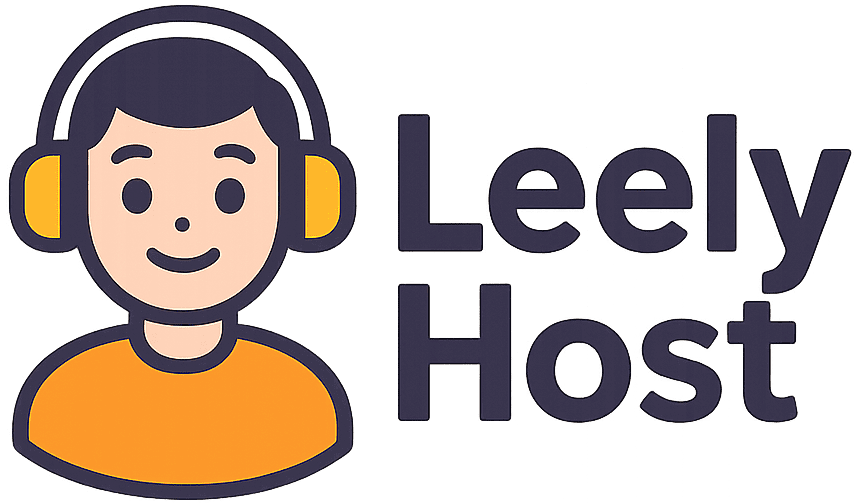What is Web Hosting? Beginner’s Guide
When I first started learning about websites, one of the most confusing terms for me was web hosting. I had a domain in mind, I knew I wanted a blog, but I didn’t understand how websites actually go live on the internet. If you’re also just starting out, this post will clear everything for you.
🌐 What Exactly is Web Hosting?
In simple words, web hosting is the place where your website lives.
Your domain (like leelyhost.com) is just the address, but hosting is the home where your files, images, code, and data are stored.
So whenever someone types your domain into Google Chrome, Safari, or any browser, your hosting server sends them your website. Without hosting, your site would only exist on your personal computer — no one else could see it.
🛠️ How Does Hosting Work?
Let’s make it easy:
- Imagine you have a shop.
- The domain is your shop’s nameboard.
- The hosting is the actual shop building where you keep all your products.
Hosting companies (like Hostinger, GoDaddy, or Bluehost) rent out space on their servers, so your website can be available 24/7 worldwide.
📌 Real Examples of Hosting
When I was starting my journey, I explored different hosting companies. Here are some popular ones:
- Hostinger → Best for beginners, cheap and fast (my referral link here).
- GoDaddy → Famous for domains + hosting combo.
- Bluehost → Very beginner-friendly, especially for WordPress.
🔑 Hosting vs Domain – The Difference
A lot of beginners get confused here (I was the same at first):
- Domain = Your website address (example: leelyhost.com).
- Hosting = The server where your website’s files are stored.
You need both together. Without a domain, nobody can find your site. Without hosting, there’s nothing to show.
📂 Types of Web Hosting
When I first researched hosting, these were the main types I found:
- Shared Hosting
- Cheapest option. Many websites share one server.
- Great for small blogs and beginner projects.
- Cheapest option. Many websites share one server.
- VPS Hosting
- More powerful, private space on a server.
- Good when your site grows.
- More powerful, private space on a server.
- Dedicated Hosting
- You rent a full server.
- Expensive but perfect for big sites with lots of visitors.
- You rent a full server.
- Cloud Hosting
- Modern hosting that uses multiple servers.
- Scalable, reliable, and becoming more popular every year.
- Modern hosting that uses multiple servers.
- Managed WordPress Hosting
- Specifically optimized for WordPress.
- Comes with updates, backups, and security handled for you.
- Specifically optimized for WordPress.
💡 Free vs Paid Hosting
I also tried free hosting in the beginning (just for practice), but honestly:
- Free hosting = slow, limited, and not reliable. Sometimes they even show ads on your site.
- Paid hosting = fast, secure, and professional. You also get your own email like info@leelyhost.com.
If you’re serious about online earning, blogging, or even freelancing, go with paid hosting.
🚀 Why Hosting Matters
I quickly learned that hosting isn’t just about “keeping your website online.” It affects:
- Speed → Fast hosting means better SEO & happier visitors.
- Security → Protects your files and data.
- Uptime → Good hosting means your site won’t randomly go offline.
- Growth → You can scale up as your website grows.
That’s why investing in the right hosting is the best decision you can make.
🔗 Related Posts You’ll Love
Since you’re learning about hosting, I highly recommend checking out my earlier posts:
- Top 5 Programming Languages to Learn in 2025
- Why LeelyHost? My Journey into Programming & Online Earning
- Maximizing Profits: How to Sell Website and File Hosting Services for Free
These will give you a complete picture of how coding, hosting, and online earning are all connected.
✅ Final Thoughts
If you’re a beginner, don’t overcomplicate things. Start with a simple domain + hosting package. Personally, I suggest Hostinger because it’s affordable, beginner-friendly, and works great with WordPress.
Remember this formula:
👉 Domain = address
👉 Hosting = home
Once you have both, you’re ready to launch your website and start your online journey! 🚀
